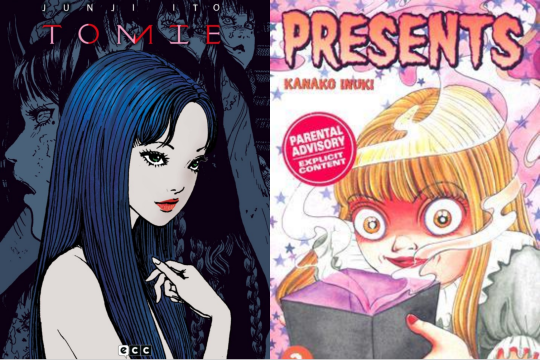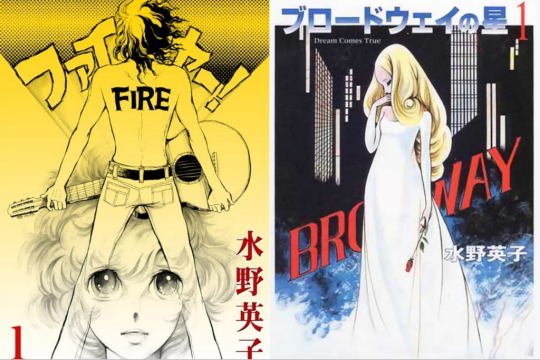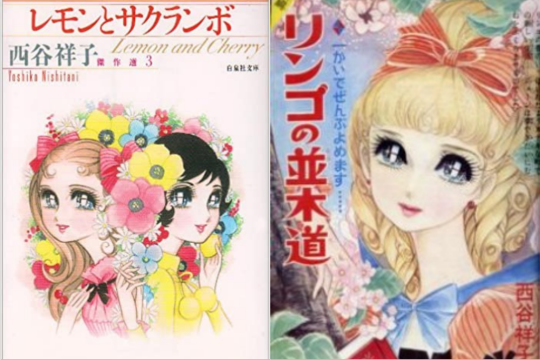#Hajime Yadate
Link
Check out this listing I just added to my Poshmark closet: Vintage Manga Gundam Endless Waltz Vol 3.
0 notes
Text
SHŌJO
Shōjo means young girl and in this case it is a manga demographic that represents this type of teenage girl. It is nothing more than a suggestion for the public to get an idea of what type of person it is aimed at, it is not intended to exclude anyone. Being a demographic or category it can really deal with any genre, like for example sci-fi with Hajime Yadate and Yutaka Nanten's Cowboy bebop manga, or it can have more adult plotlines like Ai Yazawa's Nana case. Shōjo is not synonymous of romance, although it is the genre that most abounds in this category.

Nana Spanish / English
Did you know that horror manga is a shōjo thing? Well, that's right, great mangakas like Junji Ito or the proclaimed Queen of Horror manga, Kanako Inuki, have published their works in shōjo magazines.

Tomie Spanish / English
Shōjo was born at the beginning of the 20th century with the appearance of magazines that were aimed at young girls. These magazines are nothing like today's, which only publish manga stuff. The content of the old ones was very varied, they used to include poems, articles, many illustrations, etc. but not manga. It was not until 1910 that the "manga" began to emerge, they were comic strips with four vignettes and a single page.
The first shōjo magazine to appear was Shōjo Kai (1903-1912), Shōjo Sekai (1906-1931) was the next and among the first to appear, the one that was surely the most important and the only one that survived the war was Shōjo no Tomo (1908-1955). A few years later a magazine of great importance would also begin to be published, the Shōjo Club (1923-1963).
Shojo magazines taught girls to be good mothers, good wives and good housewives, that is, "prepared them for their future". Whereas Shōnen magazines were full of boys having adventures and being great heroes.
(Giving the role of heroine to a girl was not something that was given much thought back then)
SHŌJO NO TOMO
In this magazine, women like Nobuko Yoshiya, who was a feminist, lesbian and a pioneer in lesbian literature, published some romantic stories, which was what she was most characterized. And Akiko Yosano who was a poet, feminist, social reformer and pacifist published some of her poems. but I am not going to focus on them.

In 1936 "Nazo no Clover" is published in Shōjo no Tomo, a work by Katsuji Matsumoto (1904-1986) that was forgotten and recovered in 2006. It was very innovative for the time and possibly a pioneer/prototype of the most current manga. It was a 16-page manga with a protagonist (reminiscent of "Zorro" but in a female version) who saves the peasants from the abuses of the nobility. We already have what would be the first heroine of the manga

After the arrival of the 2nd World War, the content of the shōjo magazines changed completely, now they only included war and patriotic topics. In addition, the girls left the housework to start working in factories. During this time the manga enters a void from which it does not recover until after the war.
After the war and with a Japanese society that continues to pay the consequences, the Kashi-hon became popular. The Kashi-hon were bookstores for rent, where girls (and boys too) could rent Akahon manga for 5 yen, which were like manga with reddish covers.
Post-war shōjo magazines were full of men who didn't know what girl readers wanted to find on their mangas. The reason why they worked for this type of magazine was because they wanted to gain fame to publish shōnen, that's why the shōjo manga of this time is boring and lacks plot (few authors are saved).
Machiko Hasegawa (1920-1992) was the first woman to make manga, with her work Sazae-San (1946). But the pioneer in shōjo manga was none other than Toshiko Ueda. She apprenticed with Katsuji Matsumoto and won several awards, including the Japan Cartoonists Association Excellence Award for her manga Ago Bāchan (1989) and the Shōgakukan Manga Award, one of the most prestigious manga awards.

Fuichin-san (1957-1962) (has a movie)
60s
After Shojo no Tomo (1955) disappeared and during the 60s, new magazines began to appear, such as Nakayonshi (manga such as Sailor Moon or Candy Candy have been published in it) by Kodansha (1954) or Ribon (1955) by Shūeisha. This same company also publishes Margaret (1963), the first time it was released it had 50% female mangaka (something that is incredible considering where we come from) and in 1969 90% of the mangaka who published in this they were women. These magazines were still not entirely manga and had fashion articles for example.
Some of the most outstanding mangaka of this decade are: Masako Watanabe, Miyako Maki, Hideko Mizuno and Yoshiko Nishitani. These women, unlike their male colleagues, knew how to connect more with their female audience since their protagonists were girls who were much more like reality, they were complex and had concerns, they laughed and cried, they fell in love and were disappointed.
MASAKO WATANABE (1929-)
is one of the most popular shōjo mangaka of this decade and is still very popular in Japan. She is still active and dedicating herself to manga and at the age of 91 she published her new work Himegoto. she is a diva

♡ Glass no Shiro (1969)
♡ Saint Rosalind (1973) horror shōjo
MIYAKO MAKI (1935-)
married the popular mangaka Leiji Matsumoto, they created some works together and she helped him create stronger female characters. Miyako won several awards such as: The 3rd Prize for Excellence from the Japan Cartoonists Association and the Montreal International Comic Contest Prize.

♡ Ha ha Koi Waltz (debut 1957)
♡ Maki no Kuchibue (1960)
MIZUNO HIDEKO (1939-)
liked the United States a lot and lived there for a while, which served as inspiration for her mangas. These were full of controversial topics, such as: racial discrimination, sex, drugs, rock, etc. And they also contained quite a bit of racial diversity.

♡ Fire! (1969-1971) the first male lead in shōjo
♡ Broadway no Hoshi (1967)
YOSHIKO NISHITANI (1943-)
created the first shōjo manga in a contemporary high school where the protagonist girl fell in love with a boy and truly managed to hook the female audience. Immediately Nishitani became very popular and there are rumors that she had so much work that she went a month without taking a shower.

♡ Lemon and cherry (1966)
♡ Ringo no Namikimichi (1965)
These mangakas showed that before the Year 24 Group molds and stereotypes were already being broken. So if their works were so good and innovative, why is the shojo of this time criticized so much? For two reasons:
The critics of this decade were much more focused on manga produced by men, and I've said before that men don't put much effort into shōjo.
It is not until 1967 that the manga begins to collect, so many works published in magazines were lost at the beginning of the 60s and before
Even so, this does not detract from the contribution to the Shojo manga of the Year 24 Group (of which I already spoke).
Shōjo continued to develop aesthetically, as did new genres brought in by the "Year 24 Group" (such as shōnen-ai). And more and more female mangakas are starting to emerge, but I'll talk about all this soon.
62 notes
·
View notes
Text
"Yesterday's" Manga> Mobile Suit Gundam Wing vol. 2
BW's "Yesterday's" Manga> Mobile Suit Gundam Wing vol. 2
“Stop smiling, Duo, we’re trying to look like an American comic.”
Mobile Suit Gundam Wing vol. 2
Mixx Manga (2001), originally published by Kodansha in Japan (1996)
WRITERS: Hajime Yadate & Yoshiyuki Tomino
ARTIST: Koichi Tokita
TRANSLATION: Yuki Ichimura
TOUCH-UP: Romualdo Viray II & Bernard San Juan
COVER COLORIST: John Ott
GRAPHIC ASSISTANT: Steve Kindernay
GRAPHIC DESIGNER: Akemi Imafuku
ASSO…
View On WordPress
0 notes
Link
Check out this listing I just added to my Poshmark closet: Manga anime Japan Gundam Mobile Suit Book Vol..
0 notes
Link
Check out this listing I just added to my Poshmark closet: Vintage Manga Gundam Endless Waltz Vol 3.
0 notes
Link
Check out this listing I just added to my Poshmark closet: Manga anime Japan Gundam Mobile Suit Book Vol. 1.
0 notes
Link
Check out this listing I just added to my Poshmark closet: Manga Gundam Mobile Book Novel Vol. 1 Vol. 3.
0 notes
Link
Check out this listing I just added to my Poshmark closet: Manga Gundam Mobile Book Novel Vol. 1 Vol. 3.
0 notes
Link
Check out this listing I just added to my Poshmark closet: Manga anime Japan Gundam Mobile Suit Book Vol. 1.
0 notes